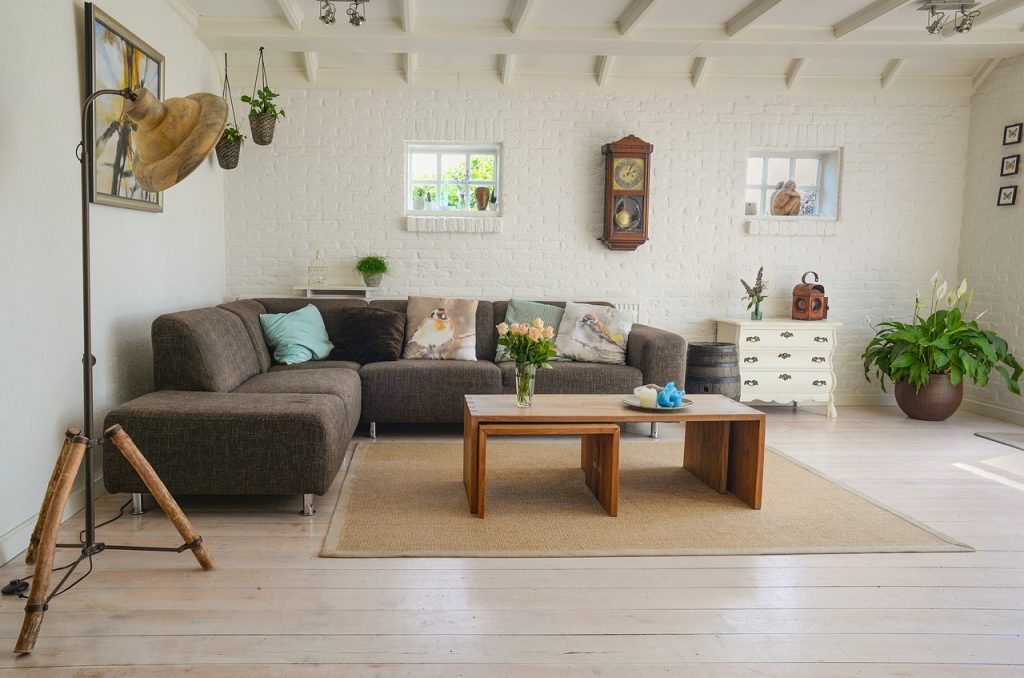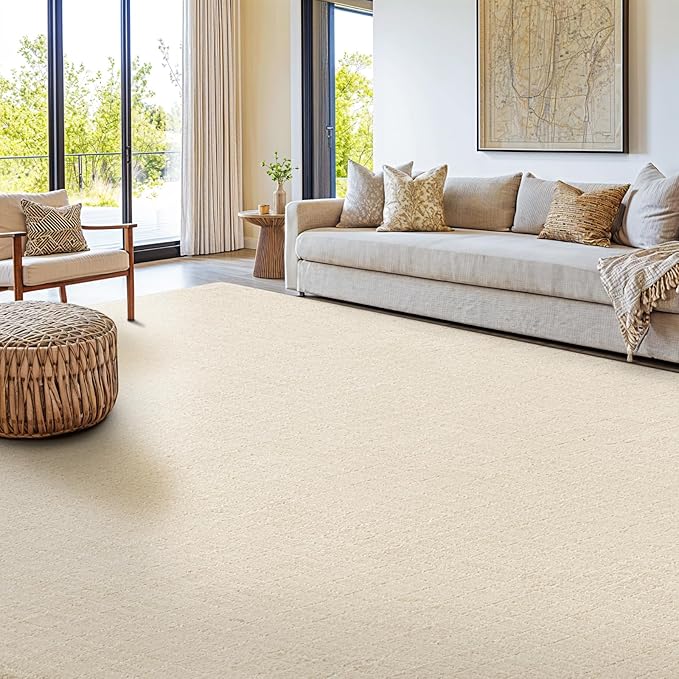Living in a small space doesn’t mean you have to sacrifice comfort or style. In fact, small living rooms have their own charm—and when designed with intention, they can be just as cozy, functional, and beautiful as larger spaces. The secret lies in adopting a minimalist approach. By keeping things simple, clean, and clutter-free, you can create a living room that feels open, airy, and inviting—even if you’re working with limited square footage.
Minimalist design is not about living without; it’s about living with just enough. It’s about choosing pieces that serve a purpose, keeping things organized, and using design to make your space feel bigger and brighter. Whether you’re in a small apartment, a tiny home, or a cozy rental, minimalism can help you make the most of your living room without overwhelming it with furniture or decor.
In this blog post, we’ll explore 10 minimalist living room ideas that are perfect for maximizing small spaces. These ideas are practical, stylish, and easy to implement—no need for a major renovation. Whether you’re starting from scratch or looking to refresh your current space, you’ll find plenty of inspiration to turn your small living room into a stylish retreat that feels calm, spacious, and uniquely you.

1. Choose Light and Neutral Colors
One of the simplest ways to make a small living room feel bigger is by choosing light and neutral colors. Shades like white, beige, soft gray, or pale taupe reflect natural light and make the space feel open and airy. These tones also create a clean backdrop that allows your furniture and decor to stand out without overwhelming the room.
You don’t have to stick to plain white walls—layering soft tones and textures adds warmth and depth. For example, combine a cream sofa with light gray curtains and a soft beige rug. This palette instantly opens up your space and creates a serene, inviting atmosphere.
2. Invest in Multi-Functional Furniture
When space is limited, every piece of furniture should earn its place. Multi-functional furniture—like storage ottomans, sofa beds, nesting tables, or coffee tables with hidden compartments—helps you get more out of your room without adding clutter.
Look for sleek, well-designed pieces that can serve multiple purposes. A bench that offers hidden storage, for example, can double as extra seating and a place to keep throw blankets or books. These smart solutions save space while keeping your living room tidy and practical.
3. Use Mirrors to Reflect Light
Mirrors are a classic design trick to make a small room feel larger. They reflect both natural and artificial light, which brightens the space and gives the illusion of depth. A well-placed mirror can open up your living room without needing any extra square footage.
Try placing a large mirror opposite a window to maximize daylight, or hang a group of small mirrors in a geometric pattern for a modern touch. Choose frames that match your minimalist aesthetic—think simple black, white, or wood tones.
4. Keep the Floor Clear
In a small space, visual clutter makes everything feel tighter. One effective way to keep things feeling open is by maintaining a clear floor. This doesn’t mean you can’t have furniture—it just means choosing pieces with clean lines and raised legs that let the eye flow underneath.
Wall-mounted shelves or floating media consoles also help by keeping items off the ground. This not only gives your living room a more open feel but also makes cleaning much easier. The more floor space you can see, the bigger your room will feel.
5. Declutter and Edit Your Decor
Minimalism thrives on simplicity. Instead of filling every surface with decor, choose a few meaningful items and let them shine. A single piece of art, a sculptural vase, or a well-placed plant can make a much bigger impact than a cluttered shelf.
Take time to assess your current decor and remove anything that doesn’t serve a clear purpose. Keep only what adds beauty or function. The goal is not to strip your personality away, but to let your favorite pieces breathe and be seen without competition.
6. Maximize Vertical Space
When you can’t go wider, go taller. Vertical space is often overlooked, but it can be a game-changer in small living rooms. Use tall bookshelves, vertical artwork, or hanging plants to draw the eye upward and make the room feel more spacious.
Wall-mounted lighting, such as sconces or pendant lamps, also frees up surface space while adding visual interest. The key is to think beyond the floor and use your walls as a design tool to open up the space.
7. Use a Statement Piece
Minimalism doesn’t mean boring. In fact, one bold statement piece can elevate your entire living room. This could be a unique armchair, a large piece of artwork, or a striking coffee table. The trick is to let that one item be the focal point and keep everything else simple.
By focusing attention on a single standout feature, you create a strong visual anchor that defines the space. It adds character without clutter and gives your minimalist living room a designer touch.

8. Choose Furniture with Clean Lines
When shopping for furniture, go for simple silhouettes and sleek shapes. Bulky or overly ornate pieces can make a small room feel cramped. Minimalist furniture typically has straight lines, light frames, and neutral colors—all of which contribute to a more open look.
Mid-century modern and Scandinavian styles are great examples of minimalist furniture that blends style with simplicity. These pieces are functional, beautiful, and often designed with small spaces in mind.
9. Use Textiles to Add Warmth
One of the challenges of minimalist design is making it feel cozy and not cold. That’s where textiles come in. Rugs, throw pillows, and blankets add softness and warmth to your space without adding visual clutter.
Stick to a limited color palette and mix textures instead of patterns. A chunky knit throw, a woven rug, and linen pillows can create a cozy, layered look that still feels minimal and uncluttered.
10. Keep the Layout Open
The way you arrange your furniture can make a big difference in how spacious your living room feels. Avoid placing furniture too close together or blocking natural walkways. Keep the layout open, with enough breathing room between pieces.
If possible, float your furniture off the walls to create a more balanced and visually appealing space. Using a small rug to define your seating area can also help organize the room without closing it in. Always prioritize flow and functionality over fitting in more items.
Conclusion
Creating a minimalist living room in a small space isn’t just about design—it’s about mindset. It’s about choosing what matters, clearing out the excess, and designing with purpose. When done thoughtfully, minimalism doesn’t make a room feel empty—it makes it feel intentional, relaxing, and uniquely yours.
By using the ideas in this post—like light colors, functional furniture, vertical space, and smart layouts—you can transform even the tiniest living room into a space that feels bigger, brighter, and more welcoming. Remember, small spaces can make a big impact when designed with care.
So whether you’re starting fresh or just looking for a few updates, take a deep breath, clear the clutter, and start creating the calm and stylish living room you’ve always wanted. Your dream space is closer than you think.
